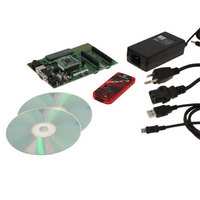DV164136 Microchip Technology, DV164136 Datasheet - Page 264

DV164136
Manufacturer Part Number
DV164136
Description
DEVELOPMENT KIT FOR PIC18
Manufacturer
Microchip Technology
Series
PIC®r
Type
MCUr
Datasheets
1.DM183032.pdf
(38 pages)
2.DV164136.pdf
(448 pages)
3.DV164136.pdf
(6 pages)
4.DV164136.pdf
(446 pages)
5.DV164136.pdf
(4 pages)
6.DV164136.pdf
(18 pages)
Specifications of DV164136
Contents
Board, Cables, CDs, PICkit™ 3 Programmer, Power Supply
Processor To Be Evaluated
PIC18F8722, PIC18F87J11
Interface Type
RS-232, USB
Operating Supply Voltage
3.3 V, 5 V
Silicon Manufacturer
Microchip
Core Architecture
PIC
Core Sub-architecture
PIC18
Silicon Core Number
PIC18F
Silicon Family Name
PIC18F8xxx
Kit Contents
PIC18 Exp Brd PICkit 3 Cable CD PSU
Lead Free Status / RoHS Status
Lead free / RoHS Compliant
For Use With/related Products
PIC18F8722, PIC18F87J11
Lead Free Status / Rohs Status
Lead free / RoHS Compliant
Available stocks
Company
Part Number
Manufacturer
Quantity
Price
Company:
Part Number:
DV164136
Manufacturer:
MICROCHIP
Quantity:
12 000
- DM183032 PDF datasheet
- DV164136 PDF datasheet #2
- DV164136 PDF datasheet #3
- DV164136 PDF datasheet #4
- DV164136 PDF datasheet #5
- DV164136 PDF datasheet #6
- Current page: 264 of 446
- Download datasheet (7Mb)
suspended. Because of this, the Baud Rate Generator is
PIC18F8722 FAMILY
20.2.4
During Sleep mode, all clocks to the EUSART are
inactive and a proper byte reception cannot be
performed. The auto-wake-up feature allows the
controller to wake-up due to activity on the RXx/DTx line,
while the EUSART is operating in Asynchronous mode.
The auto-wake-up feature is enabled by setting the
WUE bit (BAUDCONx<1>). Once set, the typical receive
sequence on RXx/DTx is disabled and the EUSART
remains in an Idle state, monitoring for a wake-up event
independent of the CPU mode. A wake-up event
consists of a high-to-low transition on the RXx/DTx line.
(This coincides with the start of a Sync Break or a
Wake-up Signal character for the LIN protocol.)
Following a wake-up event, the module generates an
RCxIF interrupt. The interrupt is generated synchro-
nously to the Q clocks in normal operating modes
(Figure 20-8) and asynchronously, if the device is in
Sleep mode (Figure 20-9). The interrupt condition is
cleared by reading the RCREGx register.
The WUE bit is automatically cleared once a low-to-
high transition is observed on the RXx line following the
wake-up event. At this point, the EUSART module is
inactive and returns to normal operation. This signals to
the user that the Sync Break event is over.
20.2.4.1
Since auto-wake-up functions by sensing rising edge
transitions on RXx/DTx, information with any state
changes before the Stop bit may signal a false end-of-
FIGURE 20-8:
FIGURE 20-9:
DS39646C-page 262
Note 1: The EUSART remains inactive while the WUE bit is set.
RXx/DTx Line
Note 1:
RXx/DTx Line
WUE bit
WUE bit
2:
RCxIF
RCxIF
OSC1
OSC1
If the wake-up event requires long oscillator warm-up time, the auto-clear of the WUE bit can occur before the oscillator is ready. This
sequence should not depend on the presence of Q clocks.
The EUSART remains inactive while the WUE bit is set.
(1)
(2)
AUTO-WAKE-UP ON SYNC BREAK
CHARACTER
Special Considerations Using
Auto-Wake-up
Q1 Q2 Q3 Q4 Q1 Q2 Q3 Q4 Q1 Q2 Q3 Q4
Q1 Q2 Q3 Q4 Q1 Q2 Q3 Q4 Q1 Q2 Q3 Q4 Q1 Q2 Q3 Q4 Q1 Q2 Q3 Q4 Q1 Q2 Q3 Q4 Q1 Q2 Q3 Q4 Q1 Q2 Q3 Q4 Q1 Q2 Q3 Q4 Q1 Q2 Q3 Q4
Bit set by user
Bit set by user
Sleep Command Executed
AUTO-WAKE-UP BIT (WUE) TIMINGS DURING NORMAL OPERATION
AUTO-WAKE-UP BIT (WUE) TIMINGS DURING SLEEP
Q1
Sleep Ends
character and cause data or framing errors. To work
properly, therefore, the initial character in the transmis-
sion must be all ‘0’s. This can be 00h (8 bytes) for
standard RS-232 devices or 000h (12 bits) for LIN bus.
Oscillator start-up time must also be considered,
especially in applications using oscillators with longer
start-up intervals (i.e., XT or HS mode). The Sync
Break (or Wake-up Signal) character must be of
sufficient length and be followed by a sufficient interval
to allow enough time for the selected oscillator to start
and provide proper initialization of the EUSART.
20.2.4.2
The timing of WUE and RCxIF events may cause
some confusion when it comes to determining the
validity of received data. As noted, setting the WUE bit
places the EUSART in an inactive state. The wake-up
event causes a receive interrupt by setting the RCxIF
bit. The WUE bit is cleared after this when a rising
edge is seen on RXx/DTx. The interrupt condition is
then cleared by reading the RCREGx register.
Ordinarily, the data in RCREGx will be dummy data
and should be discarded.
The fact that the WUE bit has been cleared (or is still
set) and the RCxIF flag is set should not be used as an
indicator of the integrity of the data in RCREGx. Users
should consider implementing a parallel method in
firmware to verify received data integrity.
To assure that no actual data is lost, check the RCIDL
bit to verify that a receive operation is not in process. If
a receive operation is not occurring, the WUE bit may
then be set just prior to entering the Sleep mode.
Q2 Q3 Q4 Q1 Q2 Q3 Q4 Q1 Q2 Q3 Q4 Q1 Q2 Q3 Q4 Q1 Q2 Q3 Q4
Cleared due to user read of RCREGx
Cleared due to user read of RCREGx
Special Considerations Using
the WUE Bit
© 2008 Microchip Technology Inc.
Note 1
Auto-Cleared
Auto-Cleared
Related parts for DV164136
Image
Part Number
Description
Manufacturer
Datasheet
Request
R

Part Number:
Description:
Manufacturer:
Microchip Technology Inc.
Datasheet:

Part Number:
Description:
Manufacturer:
Microchip Technology Inc.
Datasheet:

Part Number:
Description:
Manufacturer:
Microchip Technology Inc.
Datasheet:

Part Number:
Description:
Manufacturer:
Microchip Technology Inc.
Datasheet:

Part Number:
Description:
Manufacturer:
Microchip Technology Inc.
Datasheet:

Part Number:
Description:
Manufacturer:
Microchip Technology Inc.
Datasheet:

Part Number:
Description:
Manufacturer:
Microchip Technology Inc.
Datasheet:

Part Number:
Description:
Manufacturer:
Microchip Technology Inc.
Datasheet:











